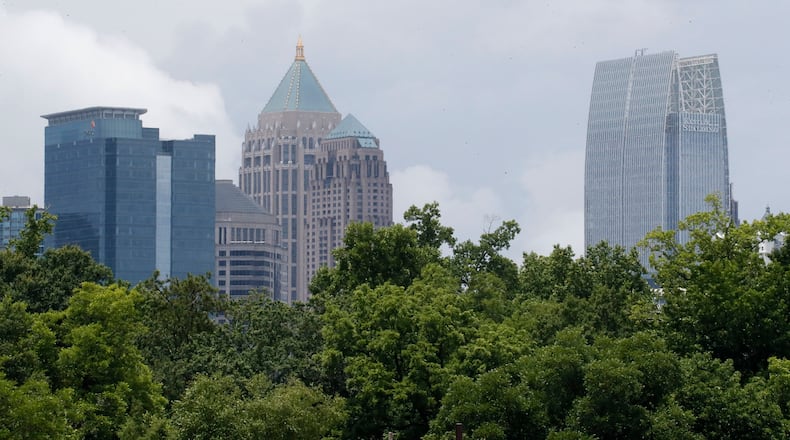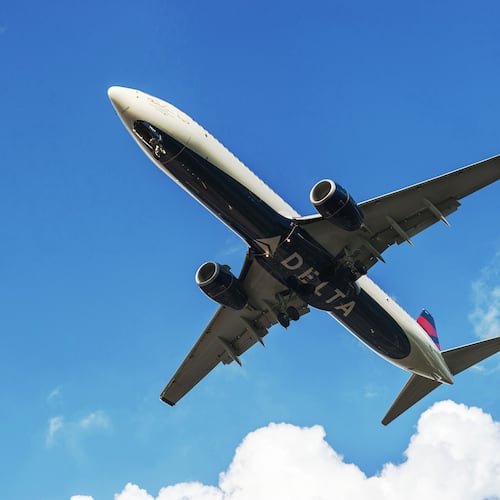For the better part of a decade, city of Atlanta officials and tree advocacy groups have struggled to strengthen a city ordinance that is supposed to preserve Atlanta’s tree canopy.
The lush blanket of trees that covers Atlanta's neighborhoods has long been a significant part of the city's identity. But tree advocates say the recent real estate boom, coupled with insufficient rules to protect trees, have put the canopy in jeopardy.
The city held seven meetings this year about the issue. In August, the city’s planning department published a timeline with the goal of having a draft ordinance in place by November.
But at a meeting last month, residents were outraged when city officials failed to produce the draft. A meeting scheduled for the following night was cancelled after audience members expressed their boisterous dissatisfaction.
A spokesman for Mayor Keisha Lance Bottoms said that maintaining and growing a healthy tree canopy was a high priority for the mayor.
“This is a distinctive part of Atlanta we must enhance,” said Spokesman Michael Smith. “An important aspect of any changes should be that our tree ordinance is easy to understand to ensure compliance on the part of residents and developers, as well as assuring that any fees associated with removal do not cause any undue economic burden on seniors and lower-income households.”
The city’s current ordinance requires homeowners to obtain permits to remove hardwood trees that have a diameter of six inches or more. For developers, a city arborist must review building permit applications for projects when trees will be removed for construction, and the developer must have a plan to replace the felled trees either at the construction site or on public lands.
The current ordinance also has a process that requires property owners to publicly post a notice when they intend to cut down a tree, and allows residents to file an appeal.
Tree advocates argue the current ordinance makes it too easy for developers to remove trees. The fine for illegally cutting down a tree is $500 for the first, and $1,000 for every one after that. The fines go into a tree trust fund.
At a public meeting in August, Planning Commissioner Tim Keane said that there seemed to be broad consensus that the current tree ordinance did not effectively protect the canopy. He added that it was too hard to interpret and that the public wants thoughtful changes driven by data.
Keane also warned that the passions surrounding the issue could inhibit progress on coming up with new rules.
“Let’s realize there are lots of perspectives on this and we have an amazing opportunity,” Keane said.
If the administration fails to act, the city council may take up the issue.
“I understand people are frustrated by the lack of progress,” said Councilman Matt Westmoreland. “This is really an important topic. I look forward to the council reviewing a draft of the ordinance or taking action within the first three months of the year.”
The city’s goal is to have 50 percent of its land shaded by trees, according to Keane’s August presentation.
Part of the problem is that no one is sure how much of the canopy has been lost because the last tree study commissioned by the city is five years old. That 2014 review showed that the city's canopy was at 47 percent.
Since then, development has accelerated.
“We are really at a tipping point,” said Buckhead resident Lisa Frank told The Atlanta Journal-Constitution in an interview.
Frank said the current ordinance also fails to take into account the different types of tree species, adding that a Cherry Laurel shouldn't be valued the same as a 100-year-old oak.
Advocates also said that they fear the city may try to get rid of the appeals process that allows them to protest the removal of trees.
“That would completely get rid of all the transparency,” said deLille Anthony, chair of the Buckhead Council of Neighborhood’s tree canopy committee.
Stokely Weinberg, a board member of the Greater Atlanta Home Builders Association, said that builders don’t want to damage the city’s tree canopy.
“We believe in the value of trees,” Weinberg said. “They add value to our properties.”
Weinberg suggested that the city’s new ordinance include greater incentives for planting replacement trees. He said under the current rules the city will grant a credit of roughly $140 per tree to property owners who replace more trees than they remove during construction. But Weinberg said the real cost is between $500 and $1,000 per tree.
Weingberg said his group wants to ensure that property owners retain the right to build on their lots.
“We are just sitting her waiting to see what’s in there,” he said.
About the Author
The Latest
Featured


